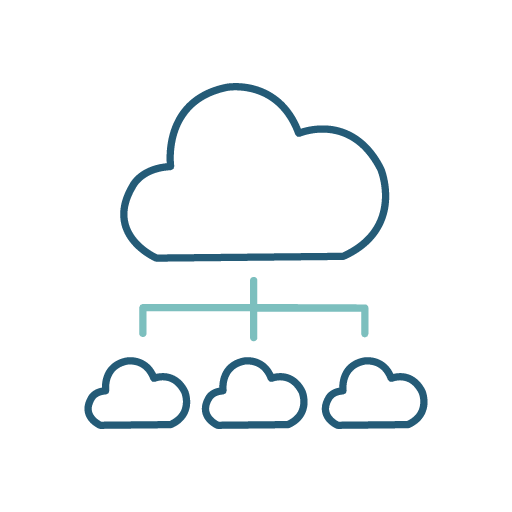SPTel offers a scalable, secure, and reliable connectivity for your global offices
The dependency on real-time communication, online collaboration, and cloud applications makes it more important than ever for your regional and global offices to be supported by a reliable and secure network solution.
As business operations expand, the need to engage a reliable and secure network solution becomes more important. SPTel offers you international multiprotocol label switching services that offer a scalable wide area network.
SPTel’s International MPLS covers over 3,000 cities worldwide, which means we are well poised to be your network partner of choice for scalable wide area network connectivity as you expand your business globally.


What is MPLS?
Multiprotocol Label Switching (MPLS) is a type of high performance data-carrying technique used within connected networks.
Instead of relying on complex lookups in a routing table for every IP packet, MPLS directs data from one network node to the next based on short label switched path rather than long network addresses. This label-based forwarding allows for much faster and more efficient data transmission. An MPLS network is provisioned over a private and resilent network, and is highly scalable to fit differing requirements at different sites, providing network security and flexibility.
Benefits of MPLS Network
-

Flexibility
We provide a fully scalable WAN, connecting customer global organizations using the most prevalent and next level technology and a carrier-managed infrastructure for an ideal foundation to build network security. Since customer’s data is kept on separate data streams and routers, it offers much more security. Despite these security mechanisms used for a router, it still has shared networking elements.
-

Reliability
Committed network performance with traffic prioritization based on your selected Class of Services
-

Quality Assurance
High performance international connectivity backed by Service Level Agreements (SLAs) that cover activation, availability, latency, packet loss, jitter, and mean time to restore
-

Scalability
MPLS combines the qualities of physical circuits with the cost-effectiveness of pure IP routing. It gives you the advantage of setting up label switched paths and doing automatic configurations of the network, delivering the cost-effectiveness you’d get from a layer 3 public internet.
Features

Recommended for:
-
Government / Critical Information
Infrastructure (CII) service provider requiring connectivity to link up overseas representative offices with their core headquarters in Singapore.
-
Banking and FSI
requiring network performance, security, and quality of service levels to cater to time-sensitive trading transactions.
-
Enterprises with multiple sites
In overseas locations and workloads hosted in and accessed via public clouds and networking.
Available Service Schemes
IMPLS Layer 2
An Ethernet over MPLS service links Layer 2 VPN connectivity between any international destination.
Features
- Classes of Service for application traffic prioritisation
- VLAN compatible
- Comprehensive SLA
- Managed/unmanaged router services
- 24/7 fault management support
Class of Service (CoS) Upgrade:
- Offers higher class of service to allow prioritization of network traffic according to business and operational needs.
Cloud Connect:
- Offers pre-integrated and assured regional connectivity to Public Clouds providers like AWS, Google, and Azure without the expense and hassle of self-set-up.
Regional Internet Breakout:
- Offers direct internet gateway from the VPN at specific regional location(s) instead of aggregating through a hub site’s internet access
Remote Site Access:
- Enables remote customer sites to access their organization’s VPN via the Internet using IPSec protocol and gateway.
Backup Link Options:
- Provides main link protection using Auto Backup Port with a secondary link or IPSec Gateway by routing to the Internet as backup into the network addresses.
IMPLS Layer 3
An IP over MPLS service links Layer 3 VPN connectivity between the branch of international locations.
Features
- Scalable solution for network convergence
- Classes of Service for application traffic prioritisation
- Comprehensive SLA
- Managed/unmanaged router services
- 24/7 fault management support
Class of Service (CoS) Upgrade:
- Offers up to 3 higher classes of services to allow prioritization of network traffic according to business and operational needs.
Cloud Connect:
- Offers pre-integrated and assured regional connectivity by routing to Public Clouds providers like the public internet cloud providers like AWS, Google, and Azure without the expense and hassle of self-set-up.
Regional Internet Breakout:
- Offers direct internet gateway from the VPN at specific regional location(s) instead of aggregating through a hub site’s internet access
Remote Site Access:
- Enables remote customer sites to access their organization’s VPN via the Internet using IPSec protocol and gateway.
Backup Link Options:
- Provides main link protection using Auto Backup Port with a secondary link or IPSec Gateway by routing to the Internet as backup into the network addresses.
Not sure which scheme suits you?
We’ll be happy to assist you.
Frequently Asked Questions
MPLS operates at a layer between the data link layer and network layer. It establishes the forwarding equivalence class (FEC), grouping packets destined with similar destination characteristics and assigning them the same label. This label-switching approach enables efficient forwarding of packets across multiple networks without conventional IP routing at each hop.
Label edge routers (LERs) are responsible for analysing the incoming packet’s destination IP address, determining the FEC, and translating it into an MPLS label at the network edge. Once labeled, the data packets traverse the MPLS network following the designated labels, bypassing the need to consult complex routing tables at each hop.
The internet engineering task force (IETF) has also developed standards for MPLS, ensuring interoperability across different vendors and network environments.
The key difference between MPLS (Multiprotocol Label Switching) and VPN (Virtual Private Network) lies in their primary functions and underlying technologies.
- Multiprotocol Label Switching (MPLS): a protocol that enables efficient routing and forwarding of data packets across service provider networks. It assigns labels to packets, allowing routers to switch them based on these labels rather than analysing the entire packet header at each hop. This streamlined approach optimises network traffic flows and provides quality of service (QoS) capabilities.
- Virtual Private Networks (VPNs): create a secure, encrypted tunnel over a public or untrusted network like the internet. It ensures data privacy and protects against unauthorised access by encapsulating and encrypting all traffic between the VPN client and server. VPNs are commonly used for remote access, site-to-site connectivity, and securing cloud services.
While MPLS focuses on optimising network traffic flows, VPNs prioritise data security and privacy through encryption. However, MPLS and VPN technologies can be combined, with MPLS providing the underlying transport and VPNs adding an encryption layer for secure communication over the MPLS backbone.
Would you like our Solutions Expert to Contact you?
Please share with us your contact details and we will connect you with the right expert to tailor a solution to your business needs.





